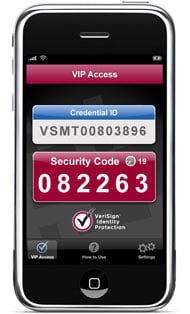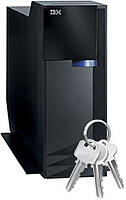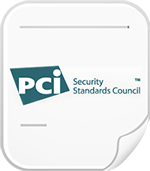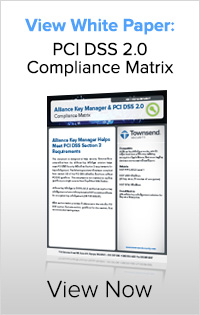 One thing that jumped out at me at this year’s RSA conference in San Francisco was the number of new vendors showing off mobile identification solutions. There were at least four new vendors of mobile-based two factor authentication solutions, and one regular exhibitor with a new entry in this area. These vendors didn’t have the biggest booths or the most lavish give-aways, but as a category they certainly made a big splash.
One thing that jumped out at me at this year’s RSA conference in San Francisco was the number of new vendors showing off mobile identification solutions. There were at least four new vendors of mobile-based two factor authentication solutions, and one regular exhibitor with a new entry in this area. These vendors didn’t have the biggest booths or the most lavish give-aways, but as a category they certainly made a big splash.
I think there are really two things responsible for this big change: Two factor authentication is now more important for security, and everyone now carries a cell phone or mobile device. The second part of this is completely obvious. In fact, I often see people carrying multiple cell phones. The ubiquity of the cell phone makes them an ideal platform to deliver a one-time password or PIN code. And phone numbers are a lot easier to manage than hardware tokens.
The first part of this, the change in the security landscape, is not as well known to many people. As we’ve moved to a de-perimeterized security reality, we are more dependent on passwords to authenticate the users of our systems. And security professionals know how weak that dependence is. People who access our systems persist in the use of weak passwords, and the bad guys get better and better at password cracking and harvesting. By itself, password authentication is a poor defense, and that’s why two factor authentication is getting a lot of attention.
So what is two factor authentication? It means that you use two different authentication methods to access a system. Those authentication methods include:
• Something you know (like a password or PIN code)
• Something you are (fingerprint, iris)
• Something you have (cell phone, HID card, hardware token)
By combining two of these authentication methods during system access you greatly reduce the chance of a security breach. For web applications, you generally find the use of a password with a PIN code generated with a hardware token (something you know, something you have), because it really hard to use a fingerprint reader or iris scanning device (something you are). And that’s why cell phone based two factor authentication is picking up steam.
Don’t be confused by security systems that use one factor twice. I’m sure you’ve seen it at work on banking web sites. First you enter a password, then you answer a personal question (where were you born, the age of your oldest child, etc.). This is one factor authentication (something you know) used twice. This is when 2 times 1 is not equal to 2. The use of one factor authentication twice does not add up to two factor authentication, and does not provide the same level of security.
Cell phones and mobile devices are a great way to deliver that second authentication factor. You have to have your cell phone to get the one time PIN code used for authentication. And everyone has one.
For more information on data security and compliance issues, visit the regulatory compliance section of our website to learn more.
Patrick

 I just listened to a discussion of database security hosted by Oracle that was very well done. At one point the discussion turned to current threats and how the Enterprise has lost the ability to use perimeter protection for sensitive data. This has been a topic of much discussion in the security area for the last few months. Perimeter protection is based on the use of Firewall and similar technologies to keep the bad guys out, but this approach is failing with the advance of more sophisticated attacks, the use of social media by large organizations, the advance of mobile technologies, insider threats, and the migration of applications to cloud platforms. The trend is called “de-perimeterization” and represents a bit of a challenge to organizations that need to protect sensitive data.
I just listened to a discussion of database security hosted by Oracle that was very well done. At one point the discussion turned to current threats and how the Enterprise has lost the ability to use perimeter protection for sensitive data. This has been a topic of much discussion in the security area for the last few months. Perimeter protection is based on the use of Firewall and similar technologies to keep the bad guys out, but this approach is failing with the advance of more sophisticated attacks, the use of social media by large organizations, the advance of mobile technologies, insider threats, and the migration of applications to cloud platforms. The trend is called “de-perimeterization” and represents a bit of a challenge to organizations that need to protect sensitive data. Last week we presented a webinar on PCI requirements for encryption key management. Many of the people who attended were encrypting data on the System i and curious about how to manage their encryption keys according to new PCI requirements.
Last week we presented a webinar on PCI requirements for encryption key management. Many of the people who attended were encrypting data on the System i and curious about how to manage their encryption keys according to new PCI requirements.  Earlier this month we released a comprehensive upgrade to our secure managed file transfer solution – Alliance FTP Manager. This latest release incorporates a number of existing Townsend Security products that were previously priced separately and features new capabilities. FTP Manager 5.2 brings together the existing products Alliance FTP Security, Alliance Cross Data, and Alliance All-Ways secure into a single product.
Earlier this month we released a comprehensive upgrade to our secure managed file transfer solution – Alliance FTP Manager. This latest release incorporates a number of existing Townsend Security products that were previously priced separately and features new capabilities. FTP Manager 5.2 brings together the existing products Alliance FTP Security, Alliance Cross Data, and Alliance All-Ways secure into a single product. In our encryption practice we often help customers integrate the exchange of encrypted data between different applications within the organization, and between their own applications and a vendor’s or customer’s application. It is truly amazing to me how often we encounter non-standard encryption that makes this integration very difficult. The problem is not the lack of standards for encryption. Most compliance regulations provide clear guidance and references to encryption standards. Here is what the PCI Data Security Standard (PCI DSS) Navigation Guide says about encryption (my emphasis):
In our encryption practice we often help customers integrate the exchange of encrypted data between different applications within the organization, and between their own applications and a vendor’s or customer’s application. It is truly amazing to me how often we encounter non-standard encryption that makes this integration very difficult. The problem is not the lack of standards for encryption. Most compliance regulations provide clear guidance and references to encryption standards. Here is what the PCI Data Security Standard (PCI DSS) Navigation Guide says about encryption (my emphasis): The PCI conference is just finishing up and I’ll have more on the conference a bit later when information can be made public. One of the interesting talks was by Chris Novak of Verizon. I just want to recap some of his thoughts.
The PCI conference is just finishing up and I’ll have more on the conference a bit later when information can be made public. One of the interesting talks was by Chris Novak of Verizon. I just want to recap some of his thoughts. IBM i (AS/400, iSeries) users send a lot of sensitive information to their customers, vendors, and employees which needs to be protected with strong encryption. Our customers today are using our PGP encryption solution to protect files. But there has been a big need to generate and protect information in common PC formats. With our upcoming release of Alliance FTP Manager for IBM i, we are stepping up our support with encrypted Zip files and encrypted PDF files.
IBM i (AS/400, iSeries) users send a lot of sensitive information to their customers, vendors, and employees which needs to be protected with strong encryption. Our customers today are using our PGP encryption solution to protect files. But there has been a big need to generate and protect information in common PC formats. With our upcoming release of Alliance FTP Manager for IBM i, we are stepping up our support with encrypted Zip files and encrypted PDF files. Compliance regulations are moving inexorably towards requiring the protection of sensitive data. The private information of customers, employees, patients, vendors and all of the people we come into contact with as Enterprises, must be protected from loss and misuse. At the same time that regulations are getting more teeth, there is more consensus about the technologies to protect data in our applications and databases. Encryption and tokenization are now the accepted methods of protecting data, and encryption key management is central to both technologies.
Compliance regulations are moving inexorably towards requiring the protection of sensitive data. The private information of customers, employees, patients, vendors and all of the people we come into contact with as Enterprises, must be protected from loss and misuse. At the same time that regulations are getting more teeth, there is more consensus about the technologies to protect data in our applications and databases. Encryption and tokenization are now the accepted methods of protecting data, and encryption key management is central to both technologies.


 Many of us have been watching the on-going drama between RIM (makers of the ubiquitous Blackberry) and various governments around the world. Governments have been successfully pressuring RIM to provide access to their internal messaging servers in order to get access to encrypted messages sent and received by Blackberry users. I think RIM has been trying to fight this access as best they can. After all, one of their key product messages is around the security of their systems. In spite of that I suspect some governments have been successful in getting at least limited access to the Blackberry servers that process secure messages.
Many of us have been watching the on-going drama between RIM (makers of the ubiquitous Blackberry) and various governments around the world. Governments have been successfully pressuring RIM to provide access to their internal messaging servers in order to get access to encrypted messages sent and received by Blackberry users. I think RIM has been trying to fight this access as best they can. After all, one of their key product messages is around the security of their systems. In spite of that I suspect some governments have been successful in getting at least limited access to the Blackberry servers that process secure messages.